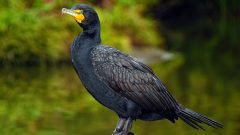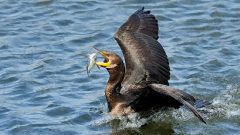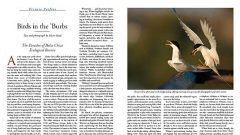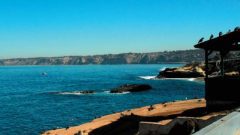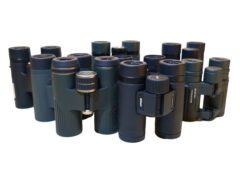Double-crested Cormorant Photo Gallery
Breeding adult
Large waterbird with a long tail and neck. Breeding birds have small tufts on the side of the head, but can be difficult to see. Note orange-yellow skin around the base of the bill and chin.
© Anonymous / Macaulay LibraryWashington, April 11, 2017Juvenile
Large, gangly waterbird with a long, hooked bill. Juveniles have orange-yellow skin around the bill and a paler neck and breast. After fishing, stands on docks, rocks, and tree limbs with wings spread open to dry.
© Jane Mann / Macaulay LibraryFlorida, February 28, 2017Nonbreeding adult
"Wing-spreading" is a technique Double-crested Cormorants use to dry their feathers after swimming, as they lack waterproof feathers.
© Timothy Barksdale / Macaulay LibraryCalifornia, February 16, 1997Not all videos have soundBreeding adult
Flies with a bend in its neck. Dark overall.
© Evan Lipton / Macaulay LibraryRhode Island, April 28, 2017Breeding adult
Large waterbird with a long tail and neck. Breeding birds have small tufts on the side of the head, but can be difficult to see. Birds in the north west tend to have whiter tufts. Note orange-yellow skin around the base of the bill and chin.
© Mark Sawyer / Macaulay LibraryCalifornia, March 10, 2017Nonbreeding adults
Individuals rest and preen in large groups on rocky or sandy islands.
© Timothy Barksdale / Macaulay LibraryFlorida, April 01, 2001Not all videos have soundJuvenile
Juveniles have a pale neck and breast that gradually blends into its darker belly.
© Jason Duxbury / Macaulay LibraryYucatán, January 09, 2013Nonbreeding adult
Sits low in the water. Nonbreeding birds are dark overall with orange-yellow skin around the bill and chin.
© Evan Lipton / Macaulay LibraryMassachusetts, July 16, 2016Flock
Migratory flocks form over both land and water in irregular V-formations. Double-crested Cormorants constantly flap their wings and have a bulky appearance when flying.
© Matthew D. Medler / Macaulay LibraryNew York, September 02, 2014Not all videos have soundHabitat
Breeds in colonies on the coast as well as on large inland lakes. Builds stick nests high in trees or on the ground.
© Oscar Wilhelmy / Macaulay LibraryMaine, June 15, 2017Nonbreeding adults
Dives for underwater prey such as schooling fish or aquatic invertebrates. A long, hooked bill aids in capture.
© Timothy Barksdale / Macaulay LibraryCalifornia, February 17, 1997Not all videos have soundCompare with Similar Species
Click on an image to compare
Species in This Family
Cormorants and Shags(Order: Suliformes, Family: Phalacrocoracidae)
More to Read
Don't miss a thing! Join our email list
The Cornell Lab will send you updates about birds,
birding, and opportunities to help bird conservation.








